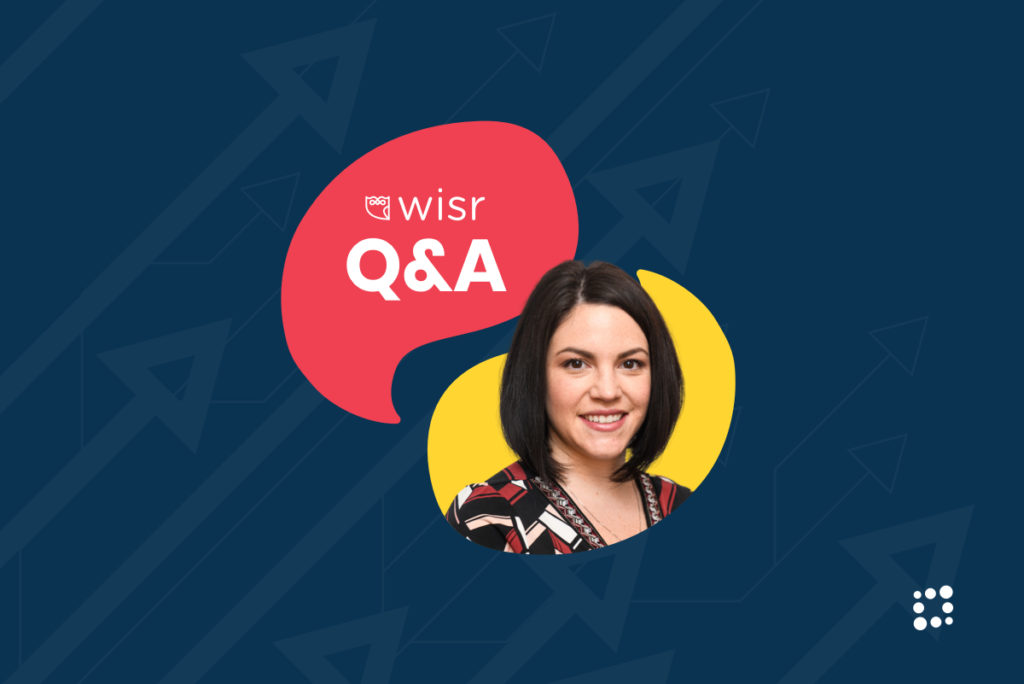During the live presentation of the Steps to Scale Your Customer Success Operations Overnight webinar, Wisr’s VP of Customer Success Christine Knific answered several questions from attendees. You can watch the webinar here and check out a recap of some of the questions and answers from the session below.
How do you track customer interactions?
We track our interactions primarily by logging touchpoints in Totango. We also CC all emails that go out, we log our meetings and that sort of thing, so that everyone has a historical record. As part of our tracking in Totango, we track all enhancement request conversations that we have with customers so that we can pull that in reporting and then use it to help make our decisions for product roadmaps in the future.
Do you use Salesforce in addition to Totango and does your sales team use Totango alongside your CS team?
We do not use Salesforce, we use HubSpot and we use the HubSpot integration in Totango. Our sales team does not use Totango directly but they do use Zoe by Totango through Slack. If you’re not familiar with Zoe, it is a way for anyone who’s not a Totango user to look up account information through Slack or other channels. For example, if the sales team wants to look up information that would be related to a potential expansion, they use Zoe to pull up the information on the account. So, they do use Totango in that way, but they’re not in the platform in the same way that our CSM team is every day.
How do you track the success of automation and the campaigns you’re sending out to customers through Totango?
We are able to see metrics on all of that in Totango. We’re able to set a goal for any email campaign so that we can really easily pull reporting on whether or not they hit the goal. For example, if the goal of the campaign is product education about a specific feature, then I use my Segment integration to set the goal of the email campaign to be “used X feature 10 times in 30 days.” Then, I can see if it worked, if it hit the goal, and then repeat it. I can also take it a step further for anyone who didn’t hit that goal and send them some further product education. I like to think of it as kind of a drip marketing campaign. If “X” worked, then they would go here. If it didn’t work, then they would go down another path.
How do you recommend using Totango’s Revenue Center for management control and for managing renewals?
We use Revenue Center quite a bit, and I actually took the step and gave my executive board access to it. I also have some automation set up that prepares my team well in advance of any renewal that’s coming up. We basically have an automated checklist to make sure certain things happen, like updating customer sentiment and forecasting at correct times. This ensures the CSM is keeping up with all of the key indicators. I also always look at the Revenue Center and renewal segments when I’m meeting with my team to check if they have any renewals coming up and to see if there’s anything that needs to be addressed with them.
What is your average onboarding training time and what does the handoff to the CSM look like?
Our average onboarding time right now is about 45 business days, though we can go a lot faster. I always tell our customers we can go as fast as they can, but there are certain bottlenecks that happen. We actually measure that in Totango and I have a dashboard that we watch closely. We involve the CSM from a strategic standpoint almost immediately. There is a kick-off that the CSM is not a part of, but when it comes time to talk about strategic programming, design, and actual goal identification, then the CSM is brought in. Once we actually send our first invitations for the user network and go live, then we hand it to the implementer to hand off to the CSM. The CSM then reminds the customer via an automated campaign what resources they have available and that they will check in with them the following week to look at their goals.
Do you need to have separate CRM systems or can Totango act as the CRM while still enabling CSM functionality?
The short answer is, if you don’t have a CRM at all, you don’t have to have one. When I think about CRM data, I think about all of the contract data, the start date, the end date, the term, the products purchased, etc. Does that live anywhere or is it just physically in your contract? If you don’t have it and you’re not planning to put it in a CRM, then yes, I would definitely get that data into Totango because you can start running your automations telling you that renewal is coming up rather than just having that in a spreadsheet. Totango is not a CRM but it could be a place for you to start if you’re not planning to employ one in the near future.
Want to learn more about how Christine and her team transformed and scaled Wisr’s customer success operations virtually overnight? Watch the full webinar here.

